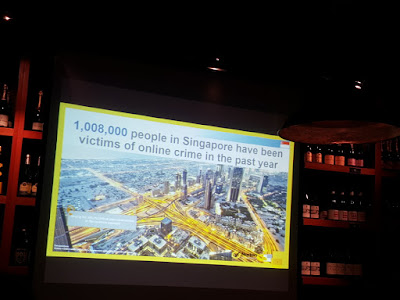The implementation of the goods and services tax (GST), drastic depreciation in the ringgit, and declining commodity prices were some of the factors affecting Malaysia's economy this year. Malaysia experienced a decline in GDP to 4.7% in 2015 and a projection of 4.5% in 2016, a slightly reduced CPI at 2.4% in 2015 and a projection of 3.8% in 2016, and a slightly increased unemployment rate at 3.0% in 2015 and 20161.
In this context, the Aon Hewitt salary survey shows stability with salary increases for 2015 at 5.6% and a projected increment of 5.8% in 20162. Prashant Chadha, Managing Director of Aon Hewitt in Malaysia said: "With a rocky 2015 and shrinking budgets, organisations must make rewards decisions not just with reliable data but also driven by the bigger picture and economic climate. Best Employers pair their rewards decisions with other aspects like performance, careers, culture, diversity, etc. to further strengthen their total rewards approach in line with employee value proposition."
Malaysia recorded the second highest involuntary turnover rate at 6% and third highest voluntary turnover rate at 9.5% in SEA this year. The Aon Hewitt TCM 2015 Survey in Malaysia shows the correlation between voluntary attrition reasons and retention measures, the top three being: "better external opportunity", "further studies" and "work life balance" while key measures taken to attract and retain employees are "pay above market", "improved work life balance" and "timely and meaningful feedback from managers"3.
Nur Amani Yusnida, Aon Hewitt Performance, Reward and Talent Practice Lead in Malaysia said: "With salaries and increases remaining stable since 2011 (average increase of 5.7% over the past five years) employers are taking the 'wait and see' cautious approach to budgeting salaries. The consistent theme seems to be 'doing more with less', optimising costs wherever possible. Voluntary turnover is trending down this year at 9.5% from 12.2% in 2014 reflecting the volatility and instability of the market conditions in Malaysia."
In addition, Aon Hewitt's recently launched Hot Topic Survey provides insights on how organisations are reacting to the recent economic environment impacting both employers and employees in Malaysia. The study reveals that the highest impact of the current economic environment on organisations comes from the depreciation of the ringgit followed by the implementation of GST. The recent road toll hike also has a significantly negative impact on employees. However, employees view the minimum wage increment and increased salary cap for Social Security Organisation (SOCSO) eligibility that was proposed in the 2016 Budget as positive.
To cope with higher living costs, 22% of organisations indicated their plans of providing higher salary increases than initially budgeted for and 7% of organisations are providing a one-off salary adjustment. Nearly half (47%) of organisations have revised their benefits programmes in the last two years, particularly the medical limits and mileage claims. About eight in 10 (76%) of organisations reported an increase in medical claims and almost three quarters (72%) indicated an increase in medical leave following the recent haze issue4.
Surendran Ramanathan, Aon Hewitt Southeast Asia Retirement and Investment Practice Lead said: "The current economic environment has adversely impacted both employer and employees, companies are facing budget constraints whilst employees are expecting to cope with the increase cost of living. Therefore companies should ensure their rewards dollars are spent more prudently to get the biggest bang for the buck."
Prashant emphasised: "Based on our Best Employers Research and through numerous CEO and HR directors' interviews we note that, while organisations optimise costs, employees must continue to strive, and high performers will not only benefit from pay for performance but also from other career-linked total rewards to ensure retention and alignment to business goals."
The Aon Hewitt Best Employers - Malaysia 2015 Country Report shows that 78% of Best Employers combine structured, formal recognition programmes with manager-driven recognition as opposed to market average of only 40%. The study also revealed that Best Employers compensate their high performers 21% higher than their average performers. This differentiation results in higher employee perception in terms of recognition and performance impact on pay5.
The Best Employers have also shown their strength across all four pillars of Best Employers, specifically in high employee engagement, compelling employer brand, effective leadership and a high performance culture. The Best Employers enjoy 38% higher income than market average, attain 50% better growth in profits than market average and have filled 38% more job openings internally compared to market average.
1 International Monetary Fund (IMF)
2 Aon Hewitt 2015-2016 Global Salary Increase Survey
3 Aon Hewitt Total Compensation Measurement
4 Aon Hewitt Hot Topic Survey, November 2015. SOCSO provides social security protection to employees and their dependents through social security schemes to improve the employees' social wellbeing.
5 Aon Hewitt Best Employers -- Malaysia 2015 Country Report























